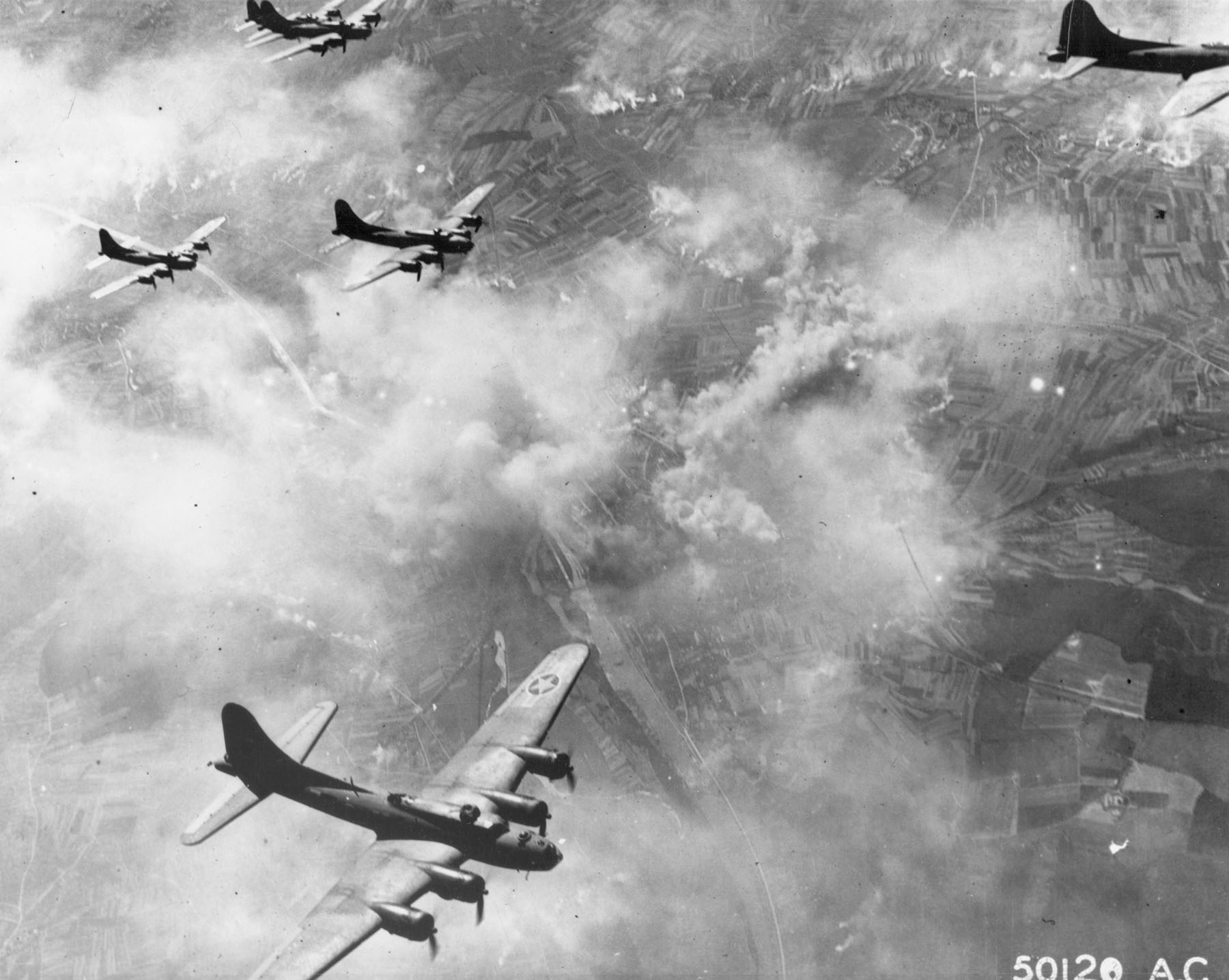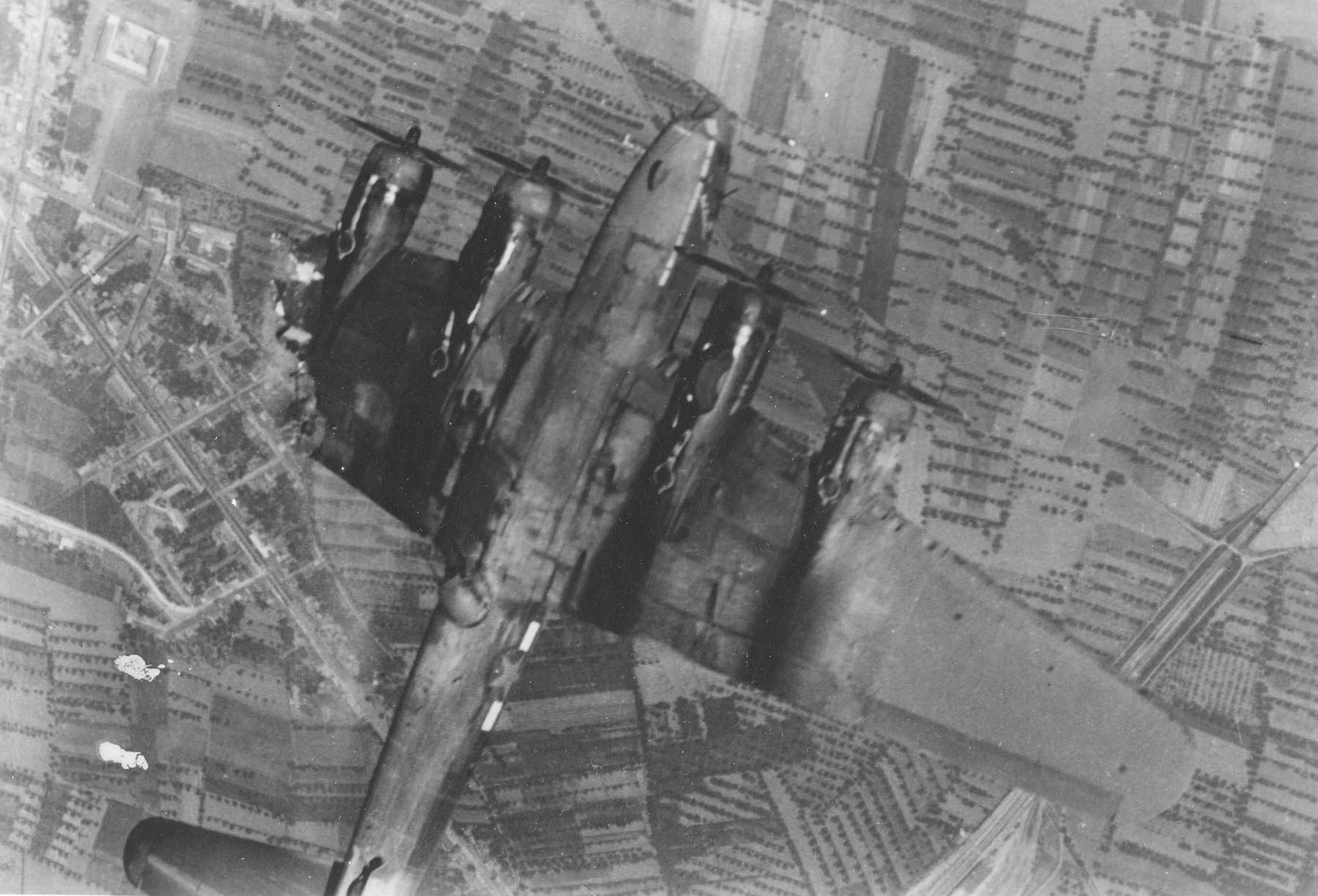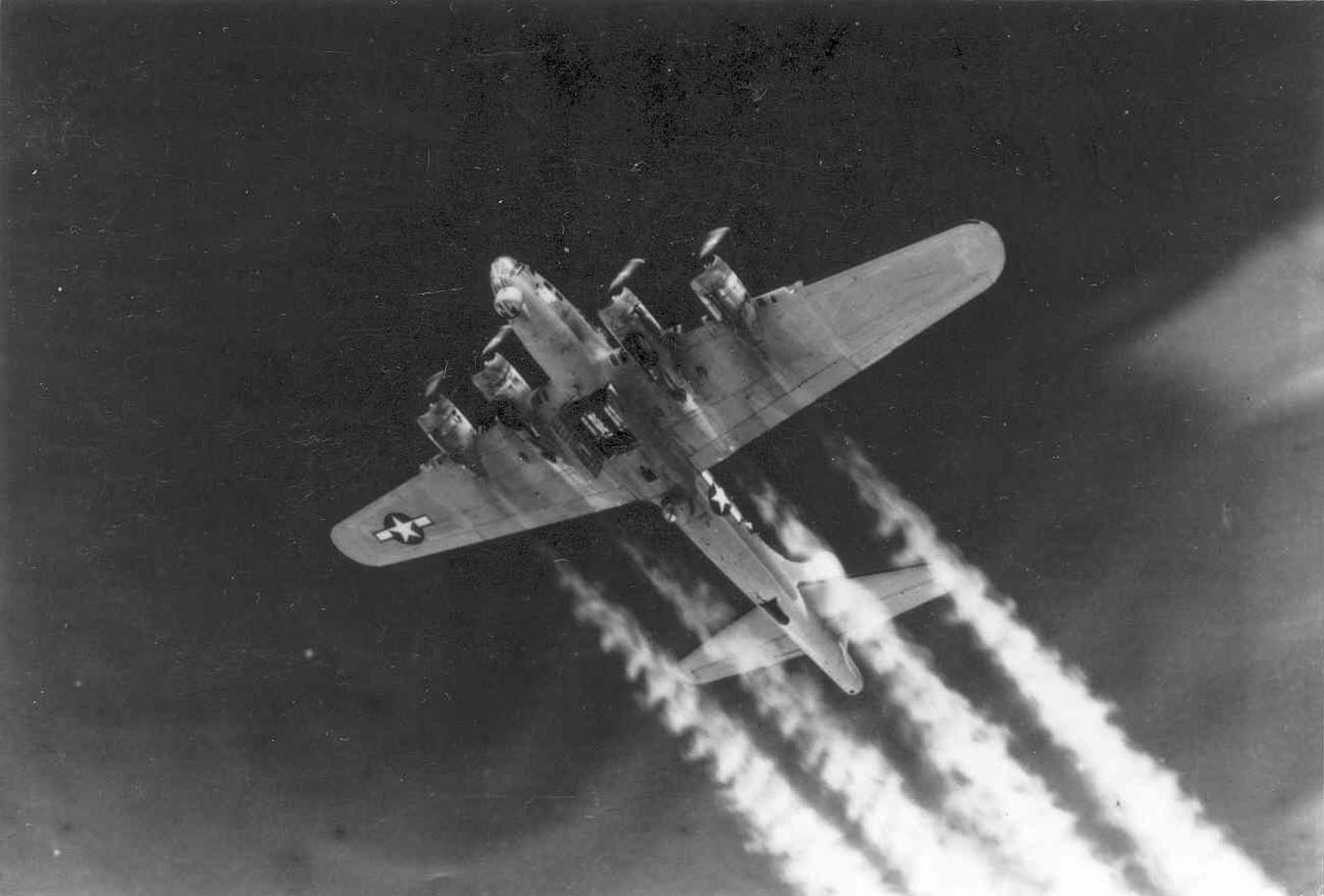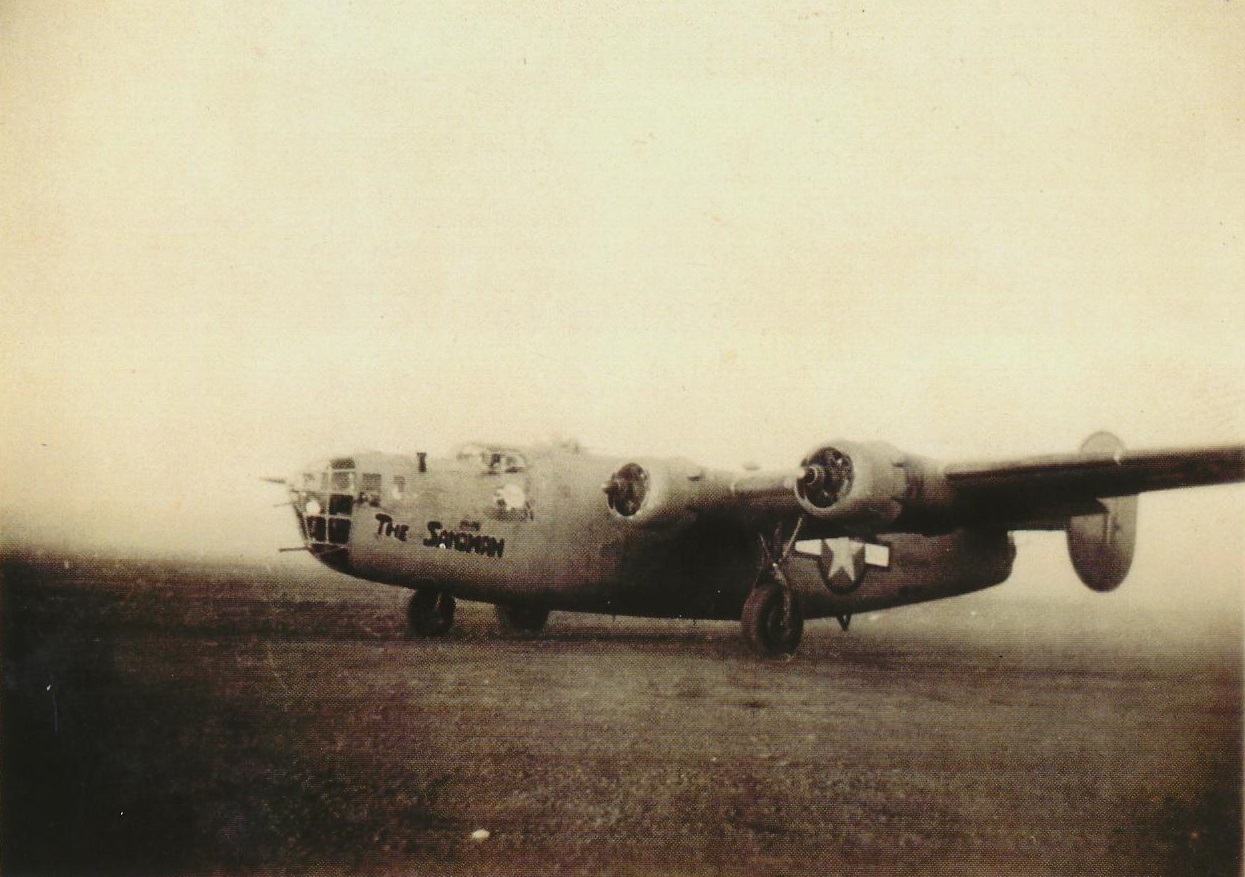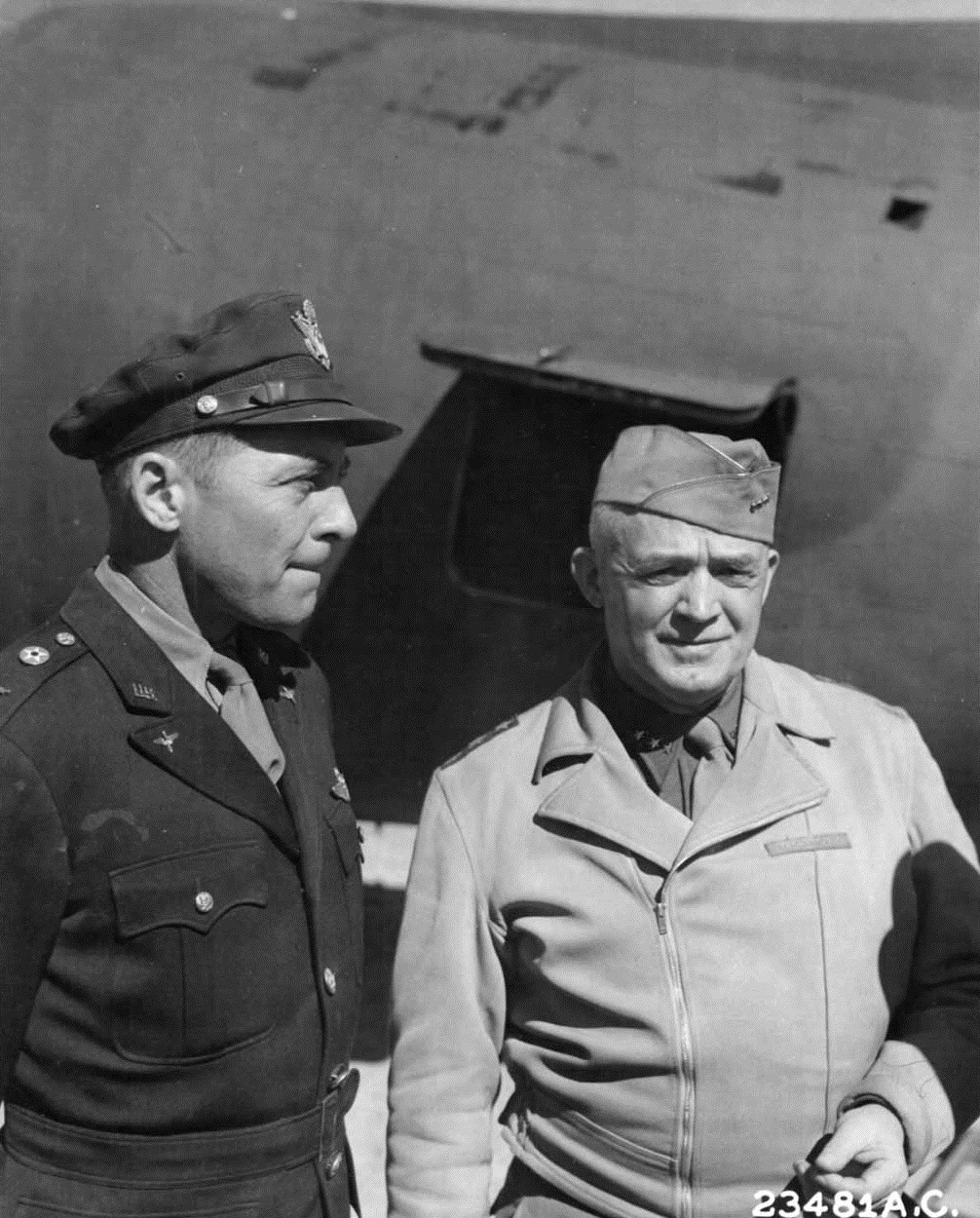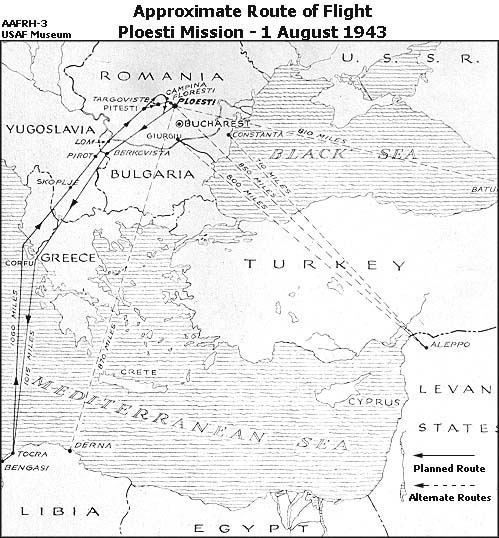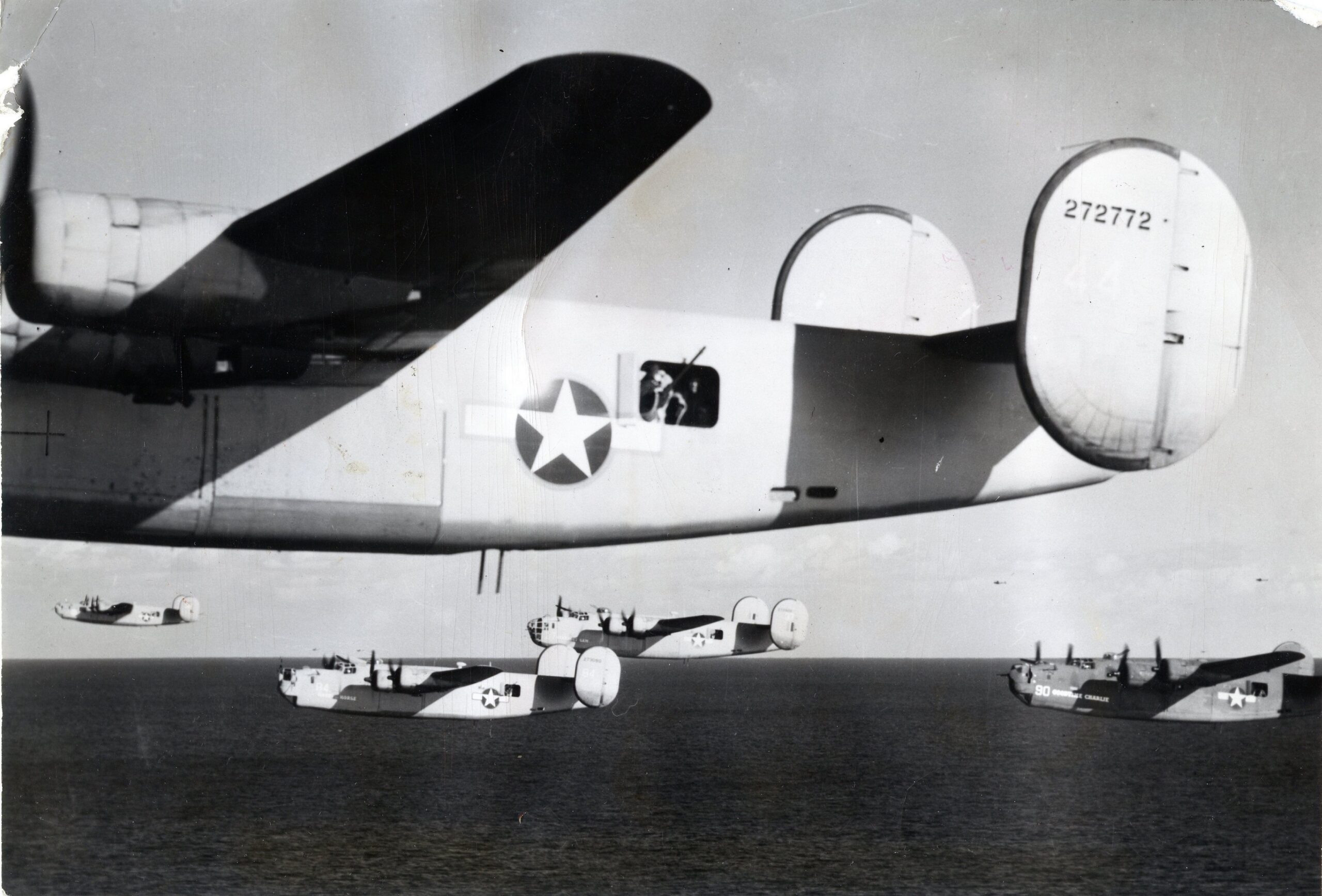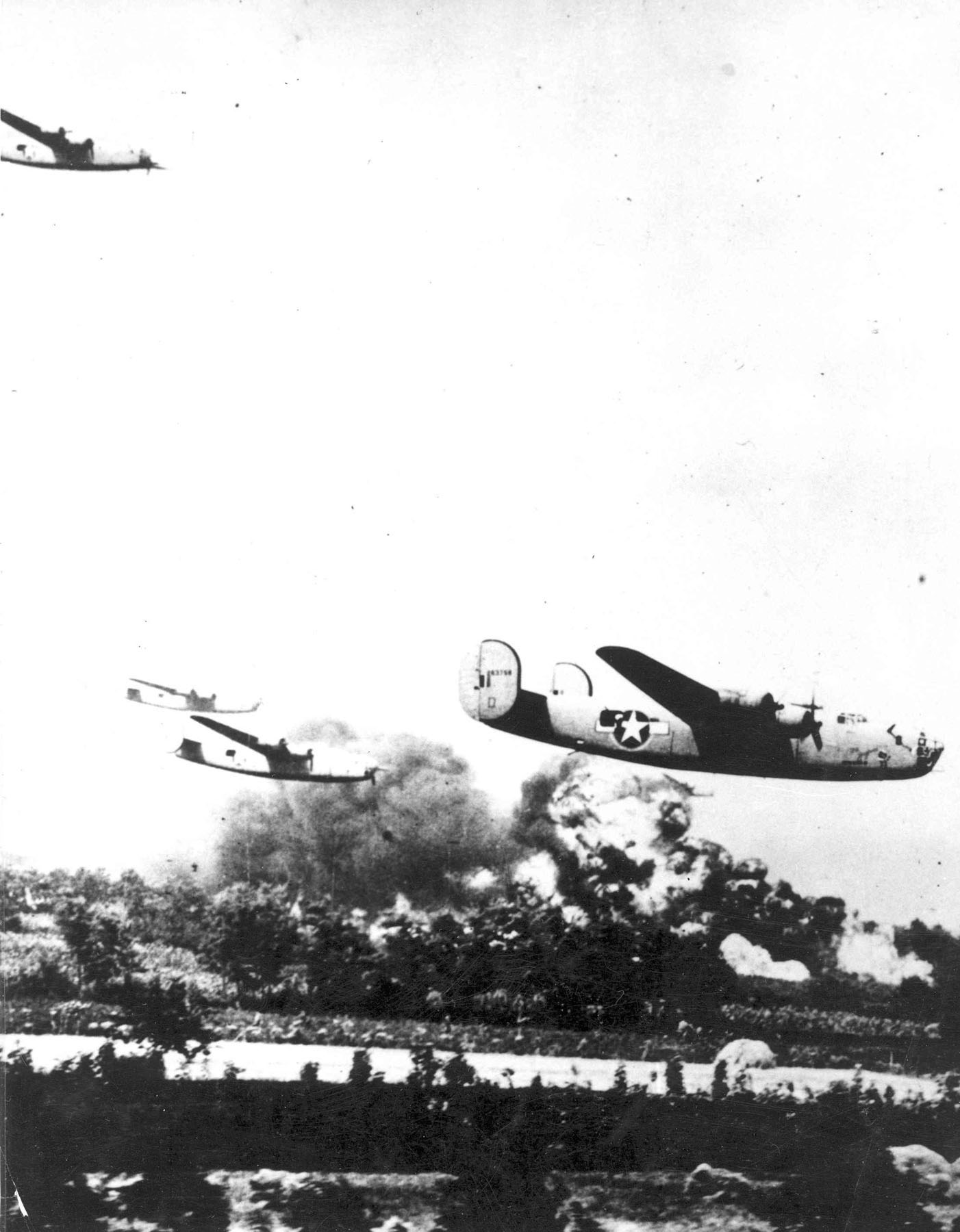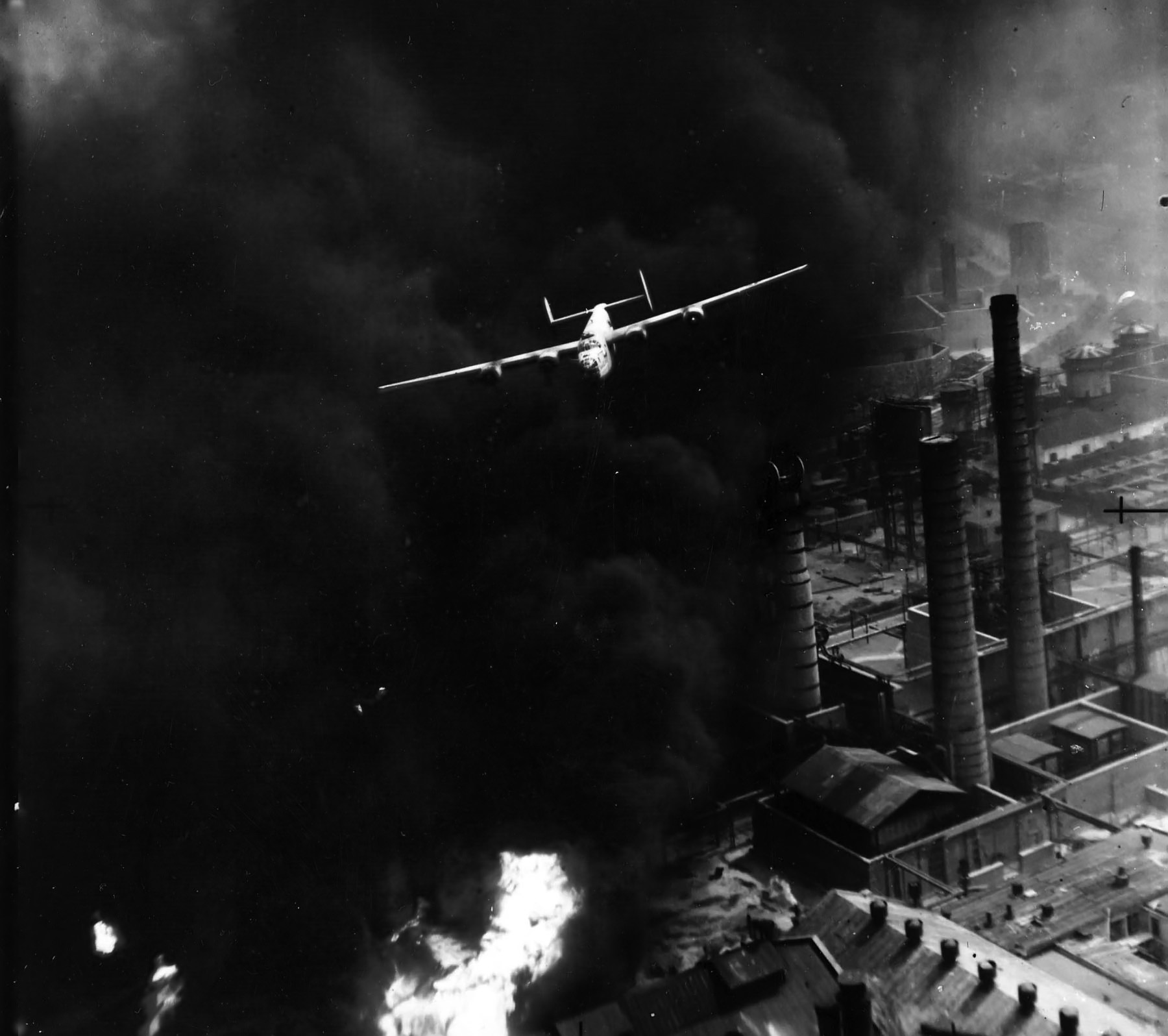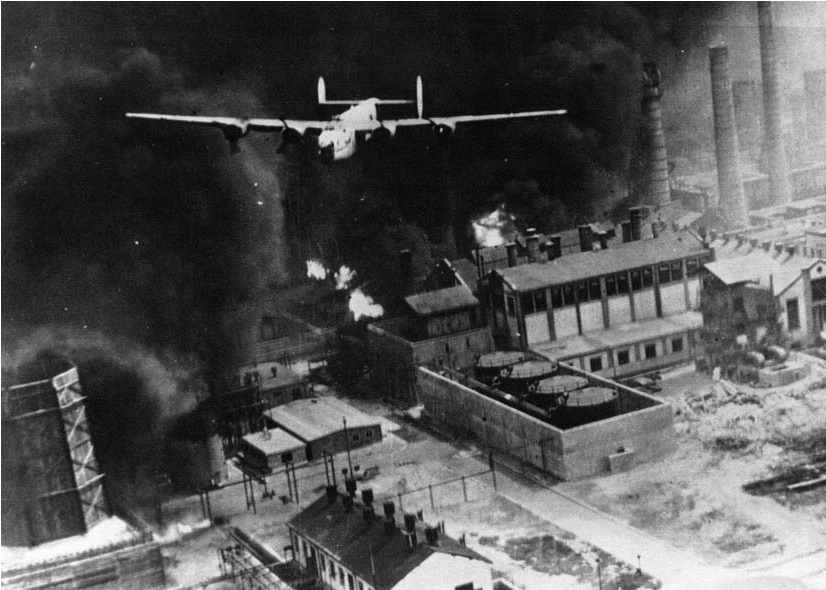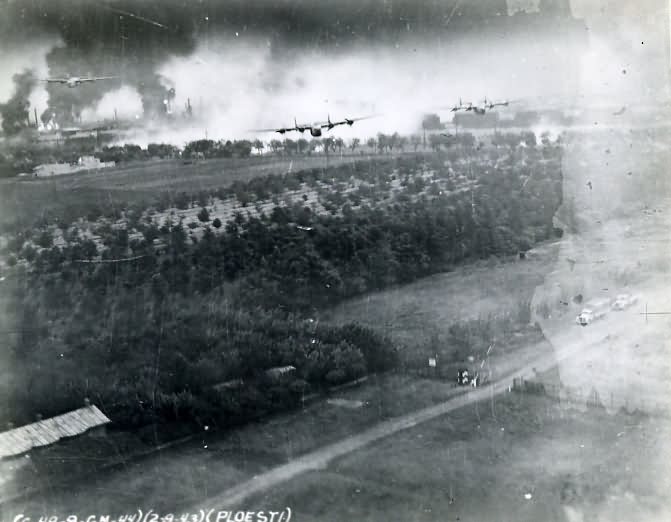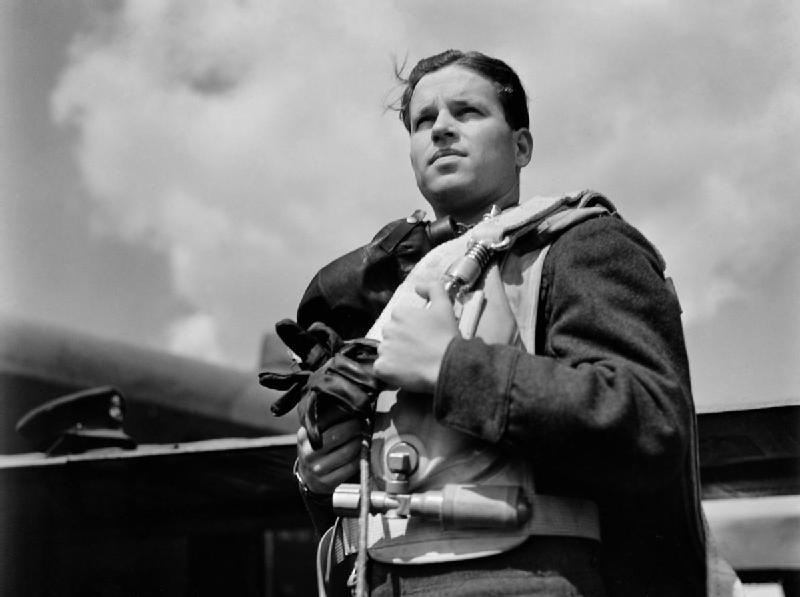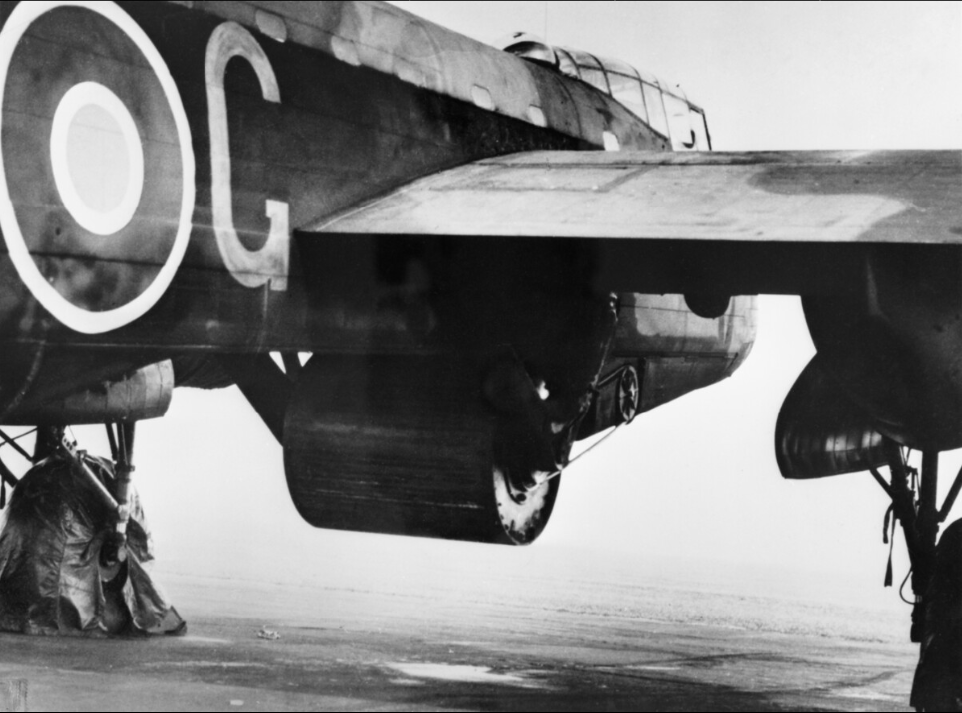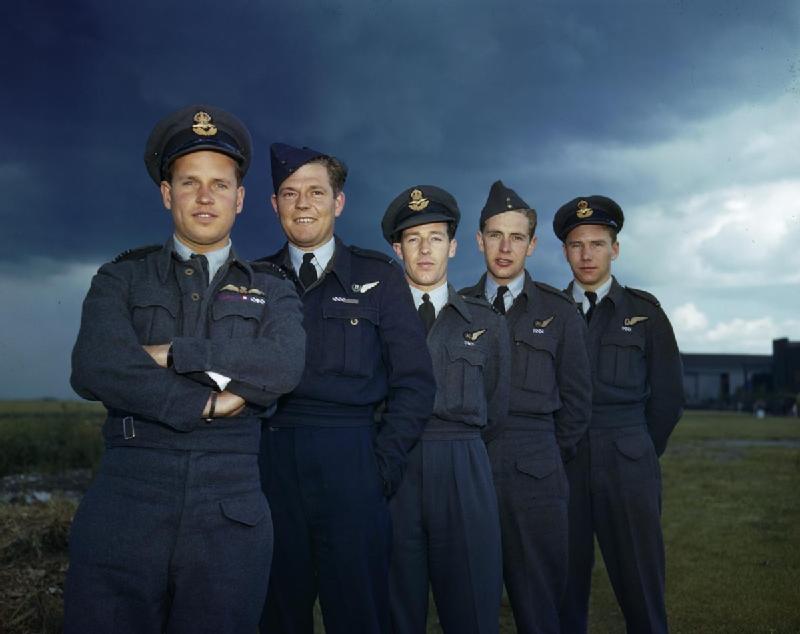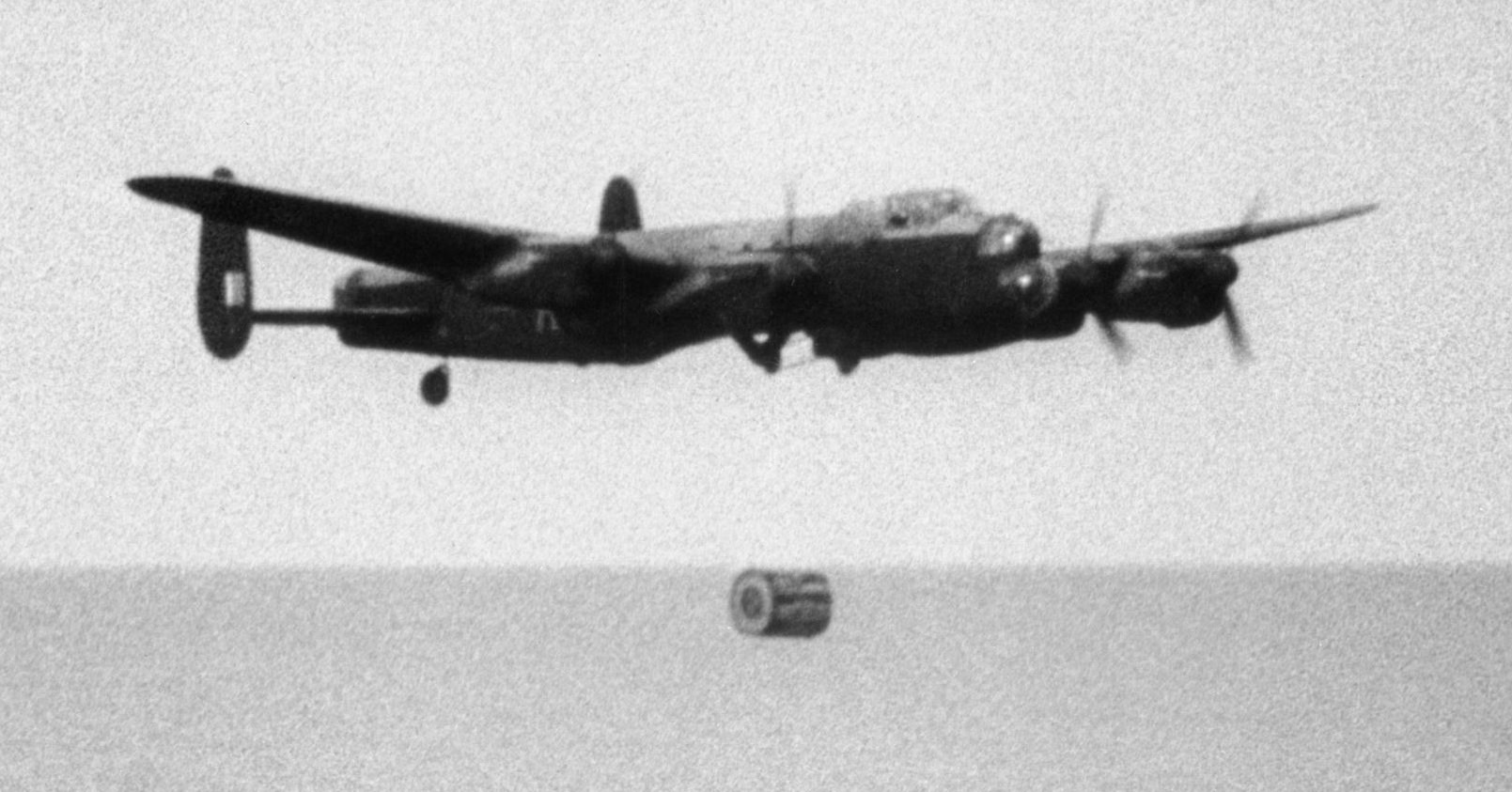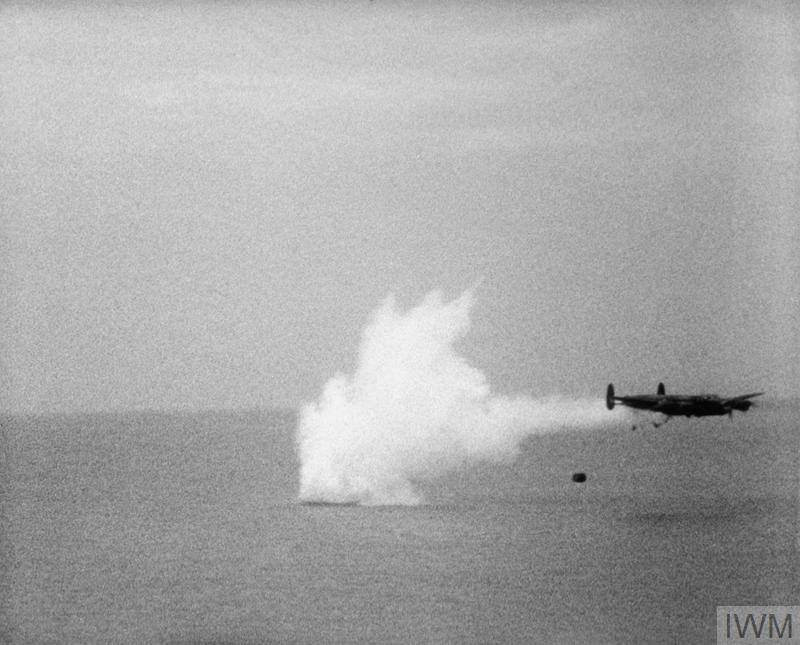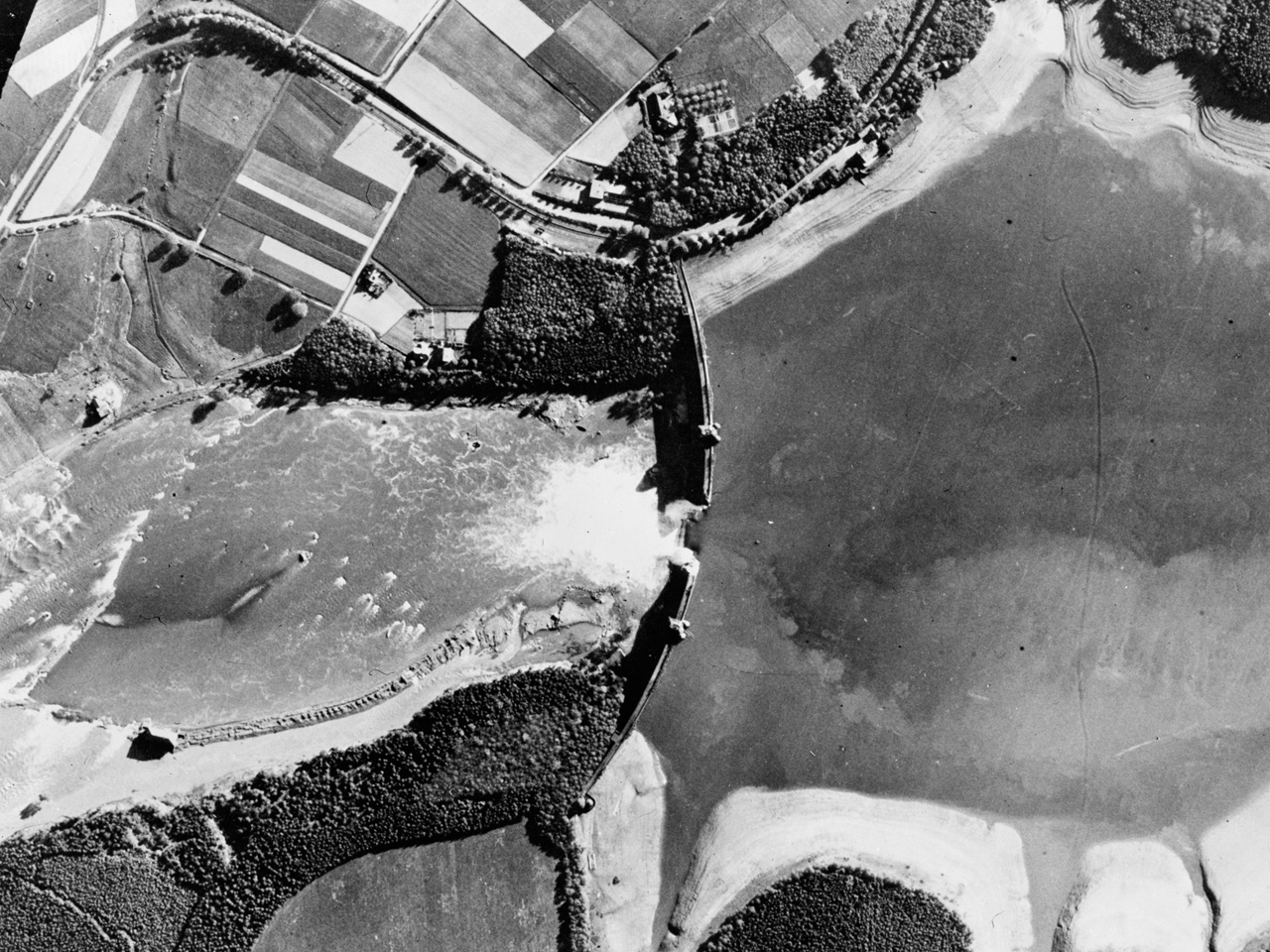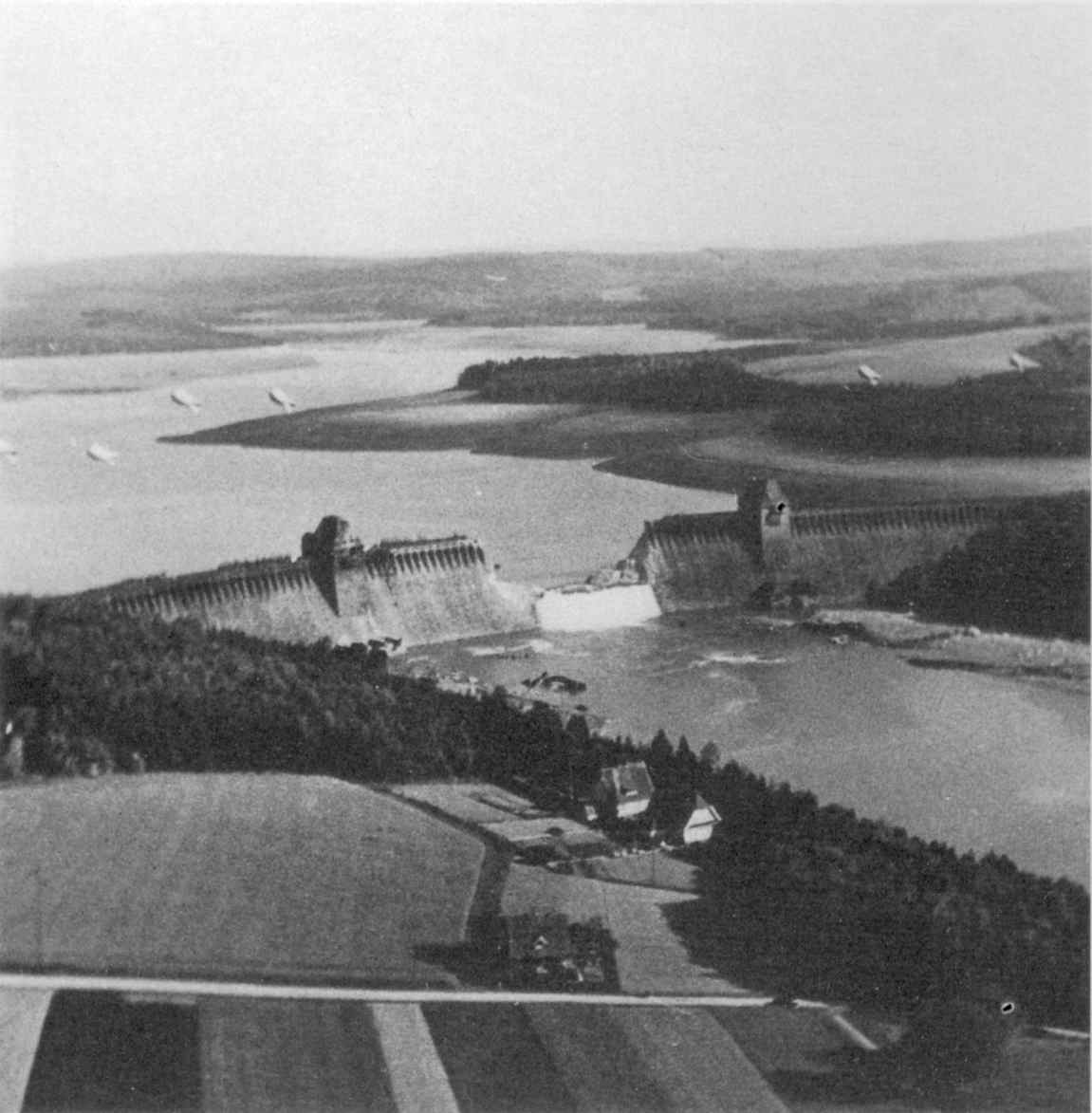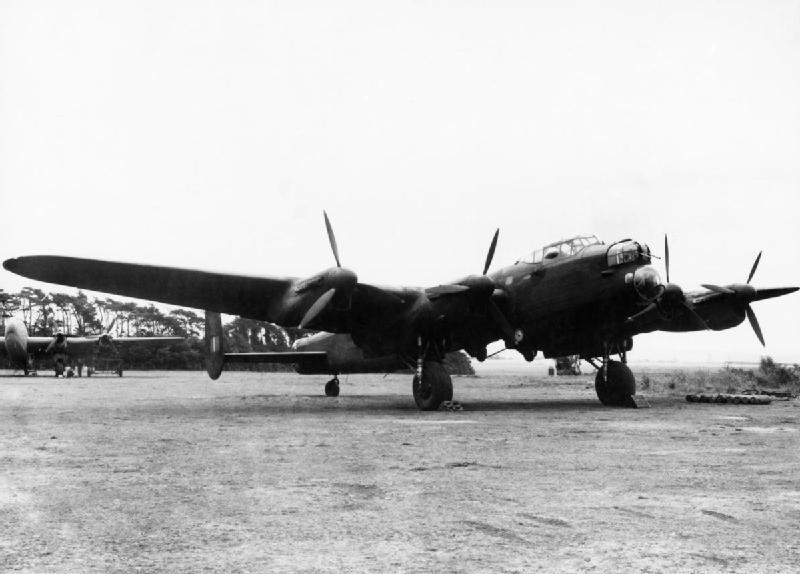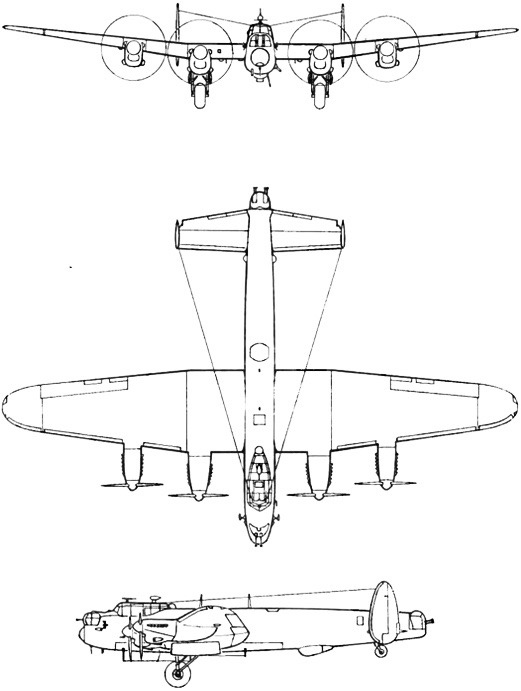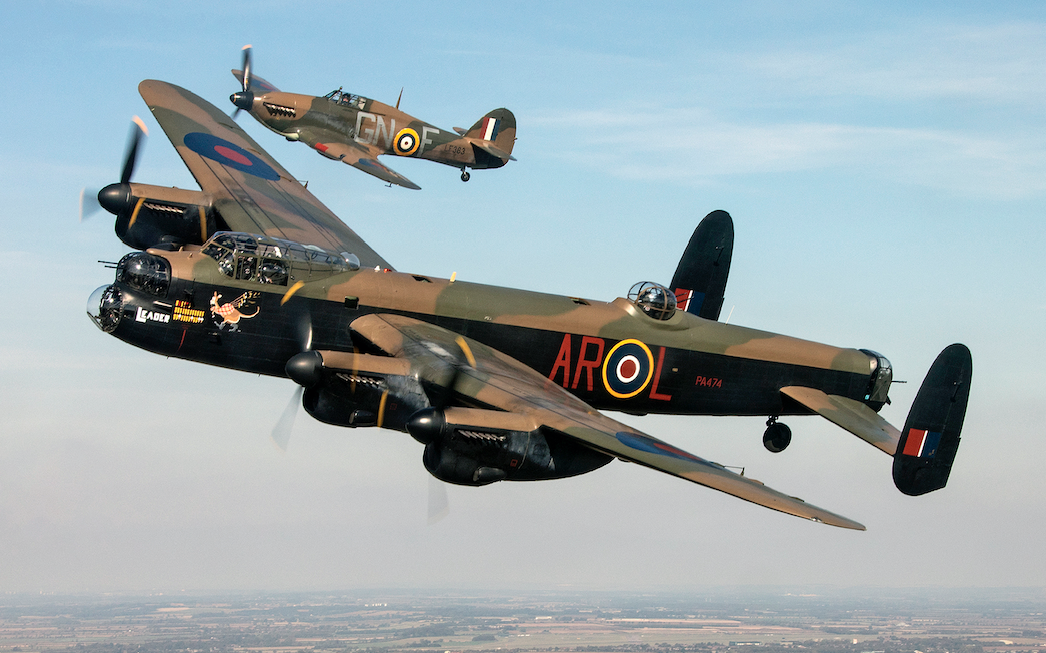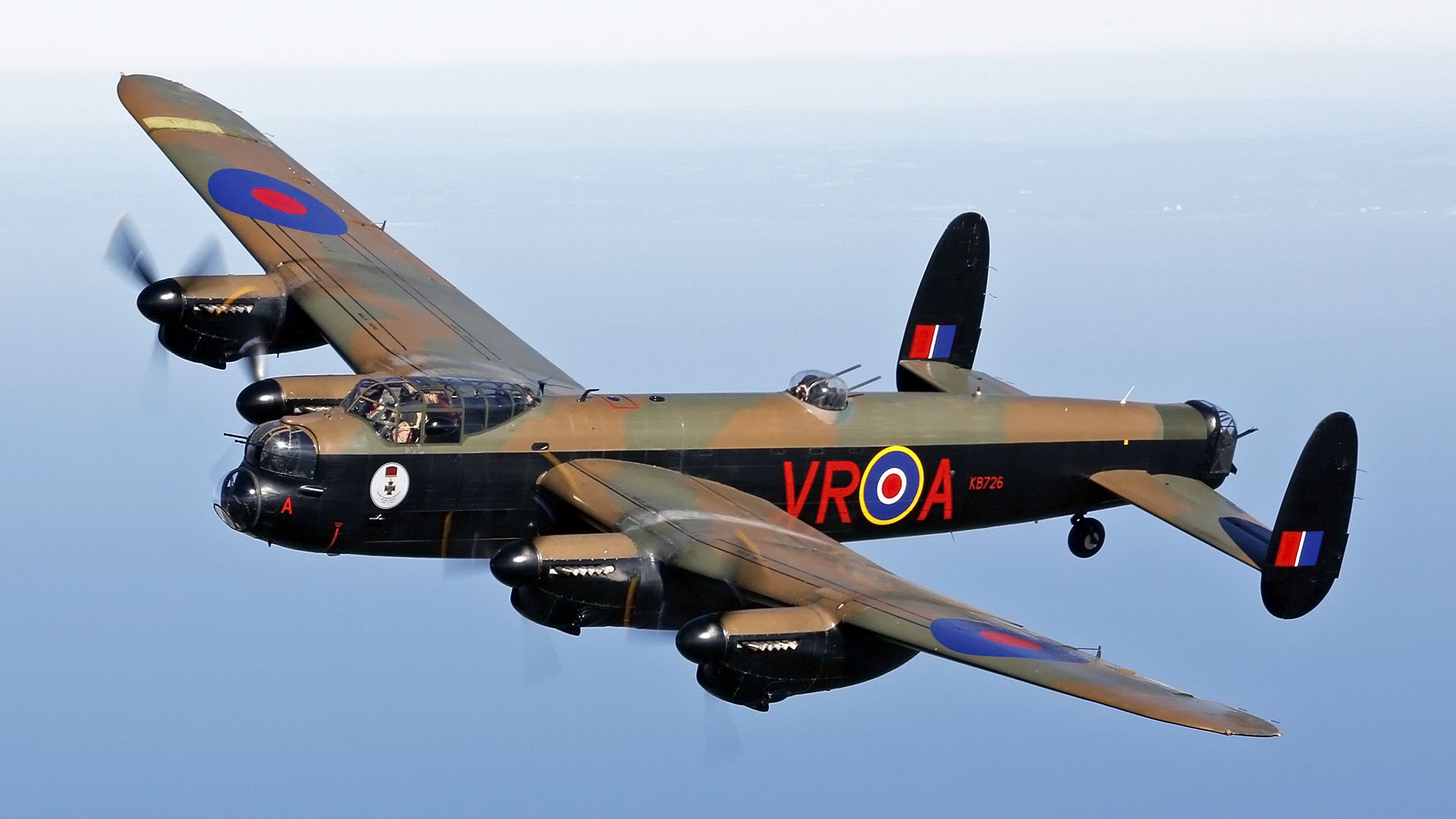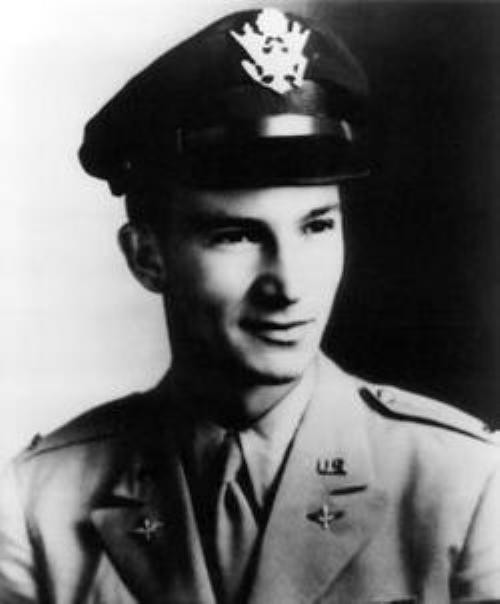
2 November 1944: The 8th Air Force sent 638 B-17 Flying Fortress four-engine heavy bombers, escorted by 642 P-51 Mustang and P-38 Lightning fighters from their bases in England, over 500 miles to attack the I.G. Farben Leunawerke synthetic oil refinery at Leuna, a 3-square-mile facility a few miles from Merseberg, Germany.
The Leuna refinery used a hydrogeneration process to produce aviation gasoline from coal. This was the most heavily defended target in all of Germany, surrounded by more than 1,700 88 mm and 105 mm antiaircraft guns (“flak”) in 36-gun batteries. According the the U.S. Strategic Bombing Survey, “Aircrews viewed a mission to Leuna as the most dangerous and difficult assignment of the air war.”
One B-17 pilot described it: “When I describe the flak over Leuna as a cloud, I don’t mean just a wall of smoke; it was a box, the length, width, and depth of our route to the ‘bombs away’ point.”
On the 2 November attack, the bombers were under “intense” anti-aircraft fire for 18 minutes, and heavy fire for 30 minutes. They were also attacked by a record 700 Luftwaffe fighters including the new Me 262 twin-engine jets. The 8th Air Force lost 38 B-17 Flying Fortress bombers and 28 fighters. An astonishing 481 bombers were damaged.
Second Lieutenant Robert E. Femoyer was the navigator on one of those B-17s, commanded by Second Lieutenant Jerome Rosenblum. B-17G-25-DL Flying Fortress 42-38052, Hotshot Green, of the 711th Bombardment Squadron (Heavy), 447th Bombardment Group (Heavy) based at RAF Rattlesden, was badly damaged by anti-aircraft fire and fell out of formation.
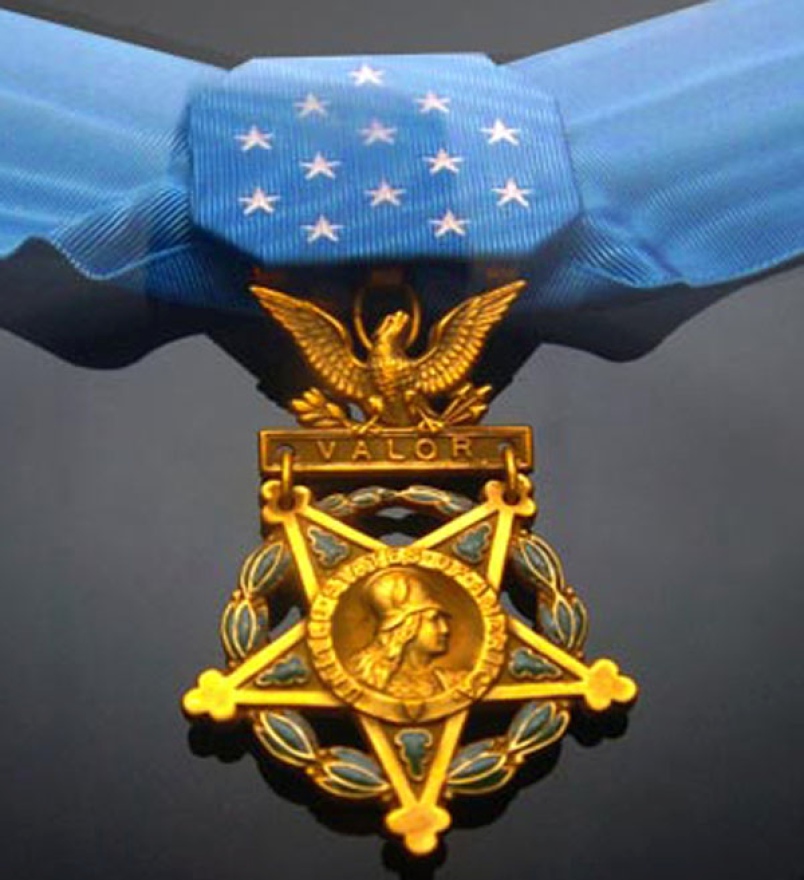
The President of the United States
in the name of The Congress
takes pleasure in presenting the
Medal of Honor
to
FEMOYER, ROBERT E.
(Air Mission)
Rank and organization: Second Lieutenant, 711th Bombing Squadron, 447th Bomber Group, U.S. Army Air Corps.
Place and date: Over Merseberg, Germany, 2 November 1944.
Entered service at: Jacksonville, Fla. Born: 31 October 1921, Huntington, W. Va.
G.O. No.: 35, 9 May 1945
Citation: For conspicuous gallantry and intrepidity at the risk of his life above and beyond the call of duty near Merseburg, Germany, on 2 November 1944. While on a mission, the bomber, of which 2d Lt. Femoyer was the navigator, was struck by 3 enemy antiaircraft shells. The plane suffered serious damage and 2d Lt. Femoyer was severely wounded in the side and back by shell fragments which penetrated his body. In spite of extreme pain and great loss of blood he refused an offered injection of morphine. He was determined to keep his mental faculties clear in order that he might direct his plane out of danger and so save his comrades. Not being able to arise from the floor, he asked to be propped up in order to enable him to see his charts and instruments. He successfully directed the navigation of his lone bomber for 2-½ hours so well it avoided enemy flak and returned to the field without further damage. Only when the plane had arrived in the safe area over the English Channel did he feel that he had accomplished his objective; then, and only then, he permitted an injection of a sedative. He died shortly after being removed from the plane. The heroism and self-sacrifice of 2d Lt. Femoyer are in keeping with the highest traditions of the U.S. Army.
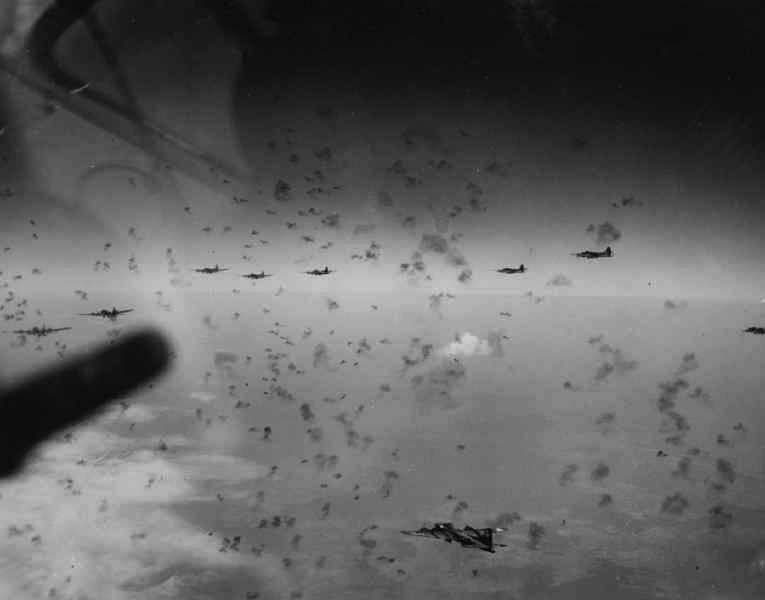
Robert Edward Femoyer was born 30 October 1921 at Huntington, West Virginia. He was the first of two children of Edward Peter Femoyer and Mary Elizabeth Kramer Femoyer. After graduating from St. Joseph’s Central Catholic High School in Huntington, Femoyer attended Marshall College for one year before transferring to the Virginia Agricultural and Mechanical College and Polytechnic Institute (better known as Virginia Tech), at Blacksburg, Virginia, as a member of the Class of 1944.
In February 1942, when he registered with the draft board, Femoyer was an employee of the Hercules Powder Company, a manufacturer of explosives. He was described as having brown hair and eyes, was 6 feet tall and weighed 150 pounds. Femoyer joined the Enlisted Reserve Corps at Roanoke, Virginia, 11 November 1942. He enlisted as a private in the Air Corps 4 February 1943 at Miami Beach, Florida, where he received basic military training.

After aircrew training at the University of Pittsburgh, March through June, 1943, Aviation Cadet Femoyer was sent to the Mississippi Institute of Aeronautics, Jackson, Mississippi, for flight training. He did not qualify as a pilot but was recommended for training as a navigator. He trained at Selman Army Airfield, near Monroe, Louisiana, and attended aerial gunnery school at Fort Myers, Florida. On graduation, 10 June 1944, Robert Edward Femoyer was commissioned as a second lieutenant.
Following combat crew training at Lincoln, Nebraska, he was deployed to England in September 1944. Lieutenant Femoyer was assigned to the 711th Bombardment Squadron (Heavy), 447th Bombardment Group (Heavy) at RAF Rattlesden, southeast of Bury St. Edmunds Suffolk, England.
Second Lieutenant Robert Edward Femoyer’s body was returned to the United States in 1949, and buried at the Greenlawn Cemetery, Jacksonville, Florida. A residential building at Virginia Polytechnic Institute was built following the war and named Femoyer Hall.
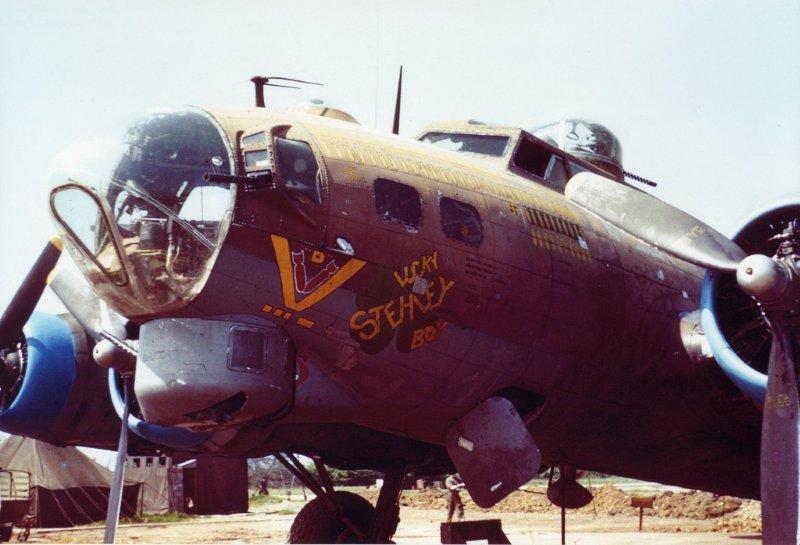
B-17G-25-DL 42-38052 was one of 2,400 B-17 Flying Fortress four-engine heavy bombers built by the Douglas Aircraft Company at Long Beach, California from 1943 to 1945. 2,395 of these were the “G” variant, with its distinctive “chin” gun turret. -052 was delivered to the U.S. Army Air Forces on Christmas Eve, 24 December 1943. In January 1944, the new bomber was assigned to the 711th Bombardment Squadron (Heavy), 447th Bombardment Group (Heavy), based at U.S. Army Air Forces Station 126 (RAF Rattlesden), Suffolk, England. The new bomber flew its first combat mission 4 February 1944.
The B-17G was camouflaged with the standard U.S.A.A.F. olive drab sides and upper surfaces, with neutral gray underneath. The vertical fin and wing tips were painted yellow and two vertical green stripes circled the aft fuselage. The four engine cowlings were painted blue, and a blue chevron was painted on the top of the right wing, indicating that this B-17 belonged to the 711th Bomb Squadron. The 447th’s group identification, a white letter “K” surrounded by a black square, was painted on the upper portion of the fin. Below this was its abbreviated serial number, “238052.” A black capital “L”, identifying the individual airplane, was painted at the bottom of the fin.
42-38052 was a replacement aircraft and was flown by several crews. It carried the names El Mal Centavo (“The Bad Penny”) and Lucky Stehley Boy, (“. . . so named in honor of Dr. Stehley of Cumberland. . . .”—Grant County Press, Petersburg, West Virginia, Thursday, 31 August 1944, Page 1, Column 6.)
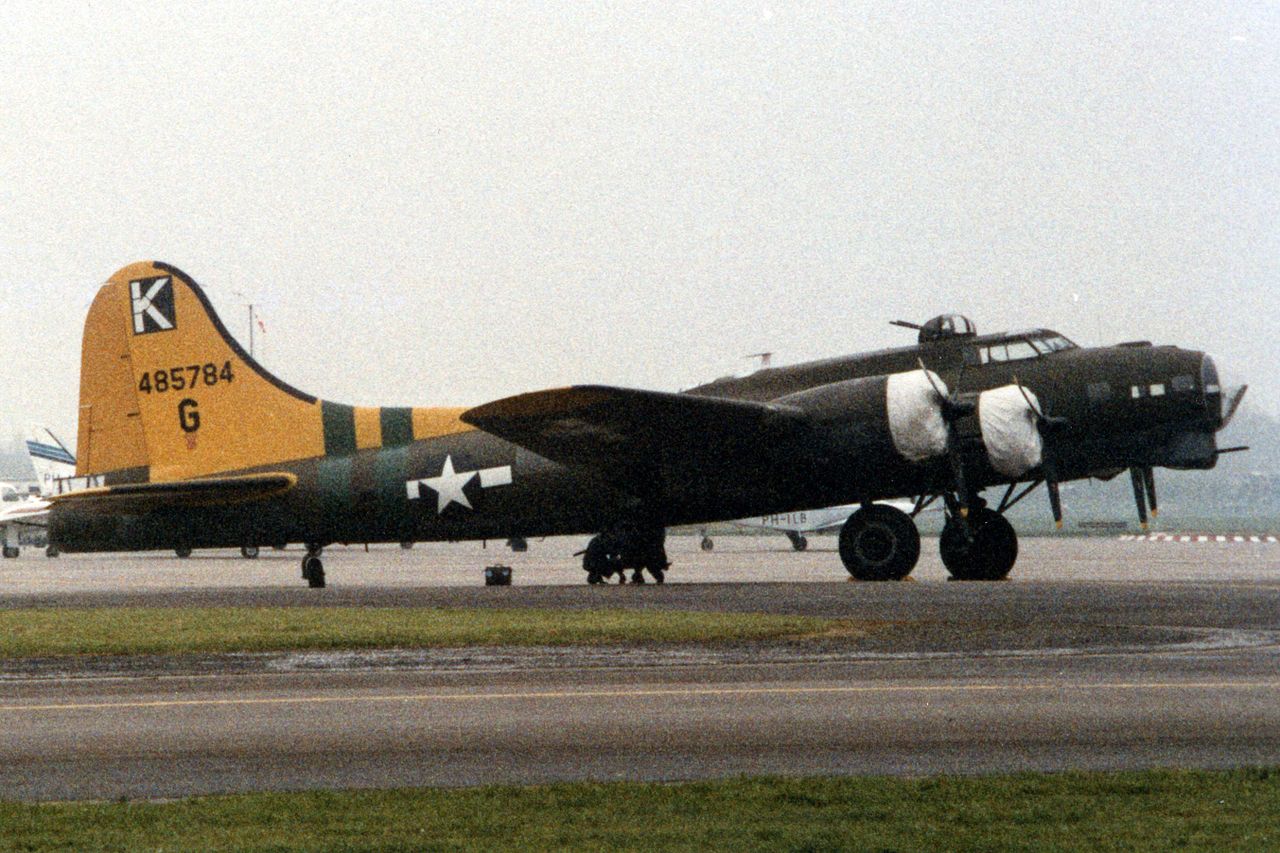
On 27 March 1945, -052 crash-landed at B-53, a forward airfield near Merville, France, when its left main landing gear failed to extend. It was repaired and survived the war.
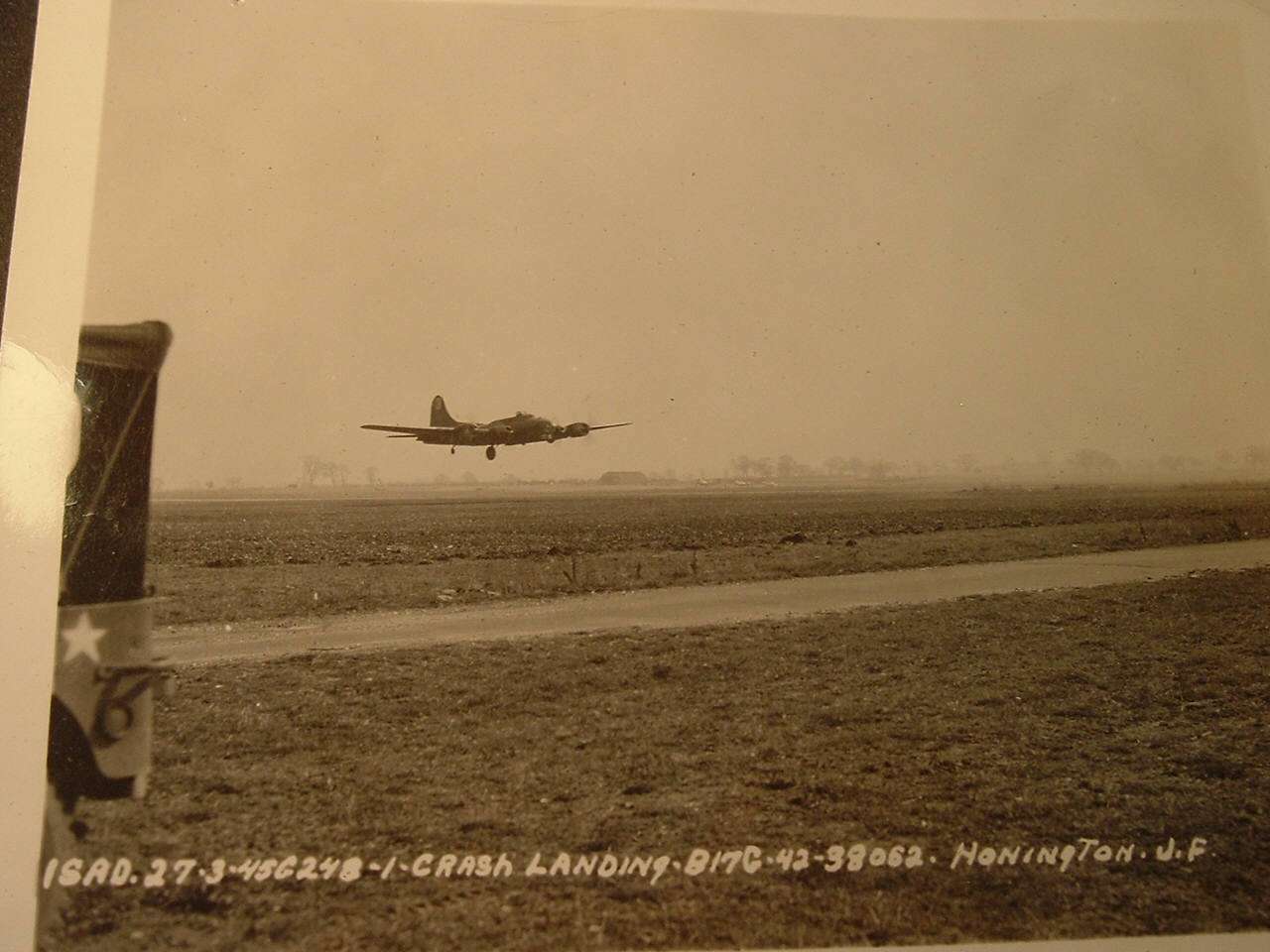
The veteran bomber was flown back to the United States and on 15 August 1945, arrived at the reclamation center at Kingman, Arizona. It was scrapped 8 November 1945, after less than two years of service.
© 2017, Bryan R. Swopes
